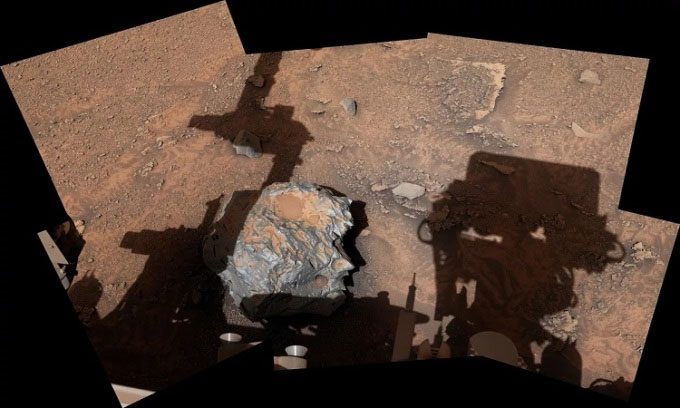NASA’s Curiosity Rover Discovers Cacao Meteorite Rich in Iron and Nickel at Gale Crater on Mars

Curiosity Rover captures image of Cacao meteorite. (Photo: NASA).
NASA’s Curiosity Rover has discovered a meteorite on the Red Planet. This meteorite, measuring 0.3 meters in diameter, is primarily composed of iron and nickel. The Curiosity project team announced the discovery on social media platform Twitter on February 2, accompanied by a photograph. They have named the new meteorite Cacao.
The Curiosity Rover, about the size of a car, landed inside the 154 km-wide Gale Crater on Mars in August 2012 as part of a mission to determine whether the area could have supported life in the past. The rover’s work over the past decade has confirmed that Gale Crater once contained a system of lakes and streams that could have been habitable. Additionally, this body of water existed for millions of years, allowing microorganisms sufficient time to potentially emerge on Mars.
Since September 2014, Curiosity has been climbing the slopes of Mount Sharp, a massive mountain rising 5.5 km from the center of Gale Crater. Recently, the rover discovered sulfate-rich sediments formed under relatively dry conditions. Observations of these rocks have provided scientists with a better understanding of how Gale Crater, and Mars in general, transitioned from a wet and warm environment to the cold desert it is today.
As of now, Curiosity has traveled 29.47 km on Mars, according to NASA. The rover has found several other meteorites during its journey. In 2016, it discovered a meteorite the size of a golf ball, which it named Egg Rock. Additionally, it found a 2.1-meter-long meteorite named Lebanon in May 2014. However, it wasn’t until July of the same year that NASA released images of this meteorite.


















































